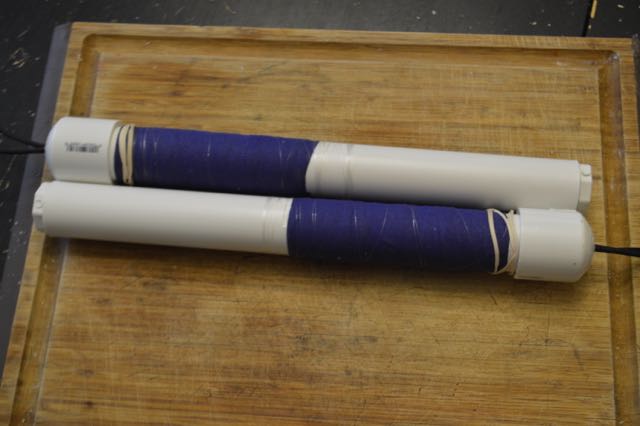
First of all, before I show you how to make portable PVC fishing gear I want to rant about prepper plans that are not as smart as many think.
Generally speaking, I think that for the VAST majority of preppers, having a “mountain man plan” of bugging out to the wilderness and living off the land is a dangerous fallacy.
In fact, there simply isn’t enough land to support everyone that has the skills to do so. Additionally, many individuals even think they have the skill level but don’t.
Although this may be true, it does not mean I don’t think that a well-rounded prepper should not have wilderness survival skills and equipment. Nor do I think that practicing outdoor skills is not fun and useful in its own right.
Consequently, I am looking forward to teaching Tell about outdoor living as he grows into manhood.
In the meantime, I want to share a outdoor living DIY tool. It is a PVC fishing setup that takes up very little space in a pack, and is pretty versatile if you have the skill to use it.
Alternatively, if you really want a sturdy line, you can use braided fishing line.
How to Make PVC Fishing Gear
Parts
- 3/4-inch MIP PVC plug
- 1 inch diameter schedule 40 PVC pipe (12-inch piece)
- 1 inch diameter PVC cap
- 18 inches black parachute cord
- 1 roll athletic tape
- 80 feet 3- to 10-pound-test fishing line
- 2 thick 1-inch-diameter rubber bands
- 3 of your favorite fishing lures
- 6 size-10 fishing hooks
- 8 size-5 split-shot weights
- Black spray paint (optional)
- Hacksaw
- Drill with 1/4-inch bit
Procedure
If you’d like to have a black fishing pole, paint all of the PVC parts now. Let them dry near a heat source for an hour, or overnight at room temperature.
- First, insert the ¾ inch MIP PVC plug into one end of the PVC pipe.
- Next, cut a ½-inch-long slit into one side of the cap. Make the slit twice as wide as the saw blade is thick.
- After that, drill a ¼-inch hole through the top of the cap.
- Tie the ends of the parachute cord in an overhand knot and thread the other end of the resulting loop through the hole in the cap.
- At the open end, cut a ½ inch long slit into the side of the pipe.
- Put the cap on the pipe. Starting ¼- inch from the base of the cap, wrap 4 inches of pipe with athletic tape.
- Cut a 1⁄16 inch deep groove across the pipe 4 inches from the plugged end. Do not cut through to the inside of the pipe.
- Tie a clinch knot into the end of the fishing line. Make sure the line rests in the slit, and pull the knot tight.
- Pull the fishing line toward the plugged end and wrap a 3-inch piece of tape around the pipe to cover the knot. This will not only hold the knot in place but also ensure that the line doesn’t snag on the knot when cast.
- Wrap about 80 feet of fishing line around this piece of tape. Don’t cut the line yet. Just cover the wraps with the rubber band to hold them in place.
- Using a clinch knot, tie your favorite lure to the end of the line.
Add Lures:
The inside of the tube is now your tackle box. Fill it with extra hooks, split shot, lures, and bobbers. You can even put a pocketknife in there.
Finally, put your newly tied lure into the pipe as well. Capture the fishing line in the gap formed by the slits in the cap and pipe. This gap will prevent the line from getting kinked and weakened.
Now you have a highly portable rod and tackle box.
To Use:
- First of all, take off the cap and pull out the tied lure. Replace the cap and remove the rubber band.
- Next, pull 3 feet of line off the spool and hold the rest of it on with your thumb. Swing the lure over your head in a counterclockwise motion. When you’ve got it swinging as fast as you can, whip the lure toward the water and take your thumb off the spool.
- Finally, slowly wrap the line around the pipe to reel it in. When you feel the fish bite, give the line a quick jerk to set the hook and reel it in.
I like having some portable fishing gear in my kit but its not as efficient as using normal fishing gear. Plus I miss not having my electronic fish finder.
If you have pictures of you using such a piece of equipment send them to me, and I will post them here…
